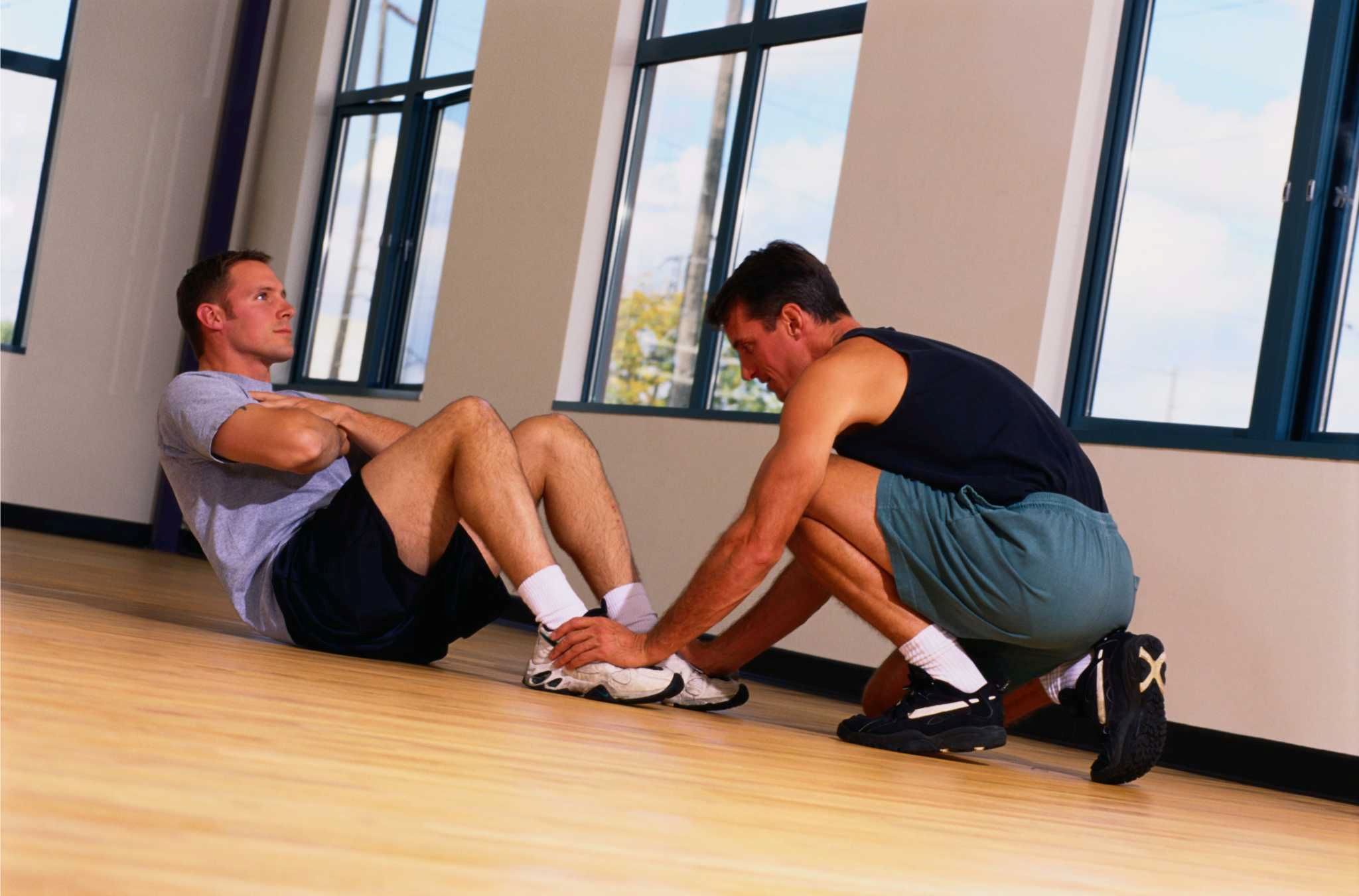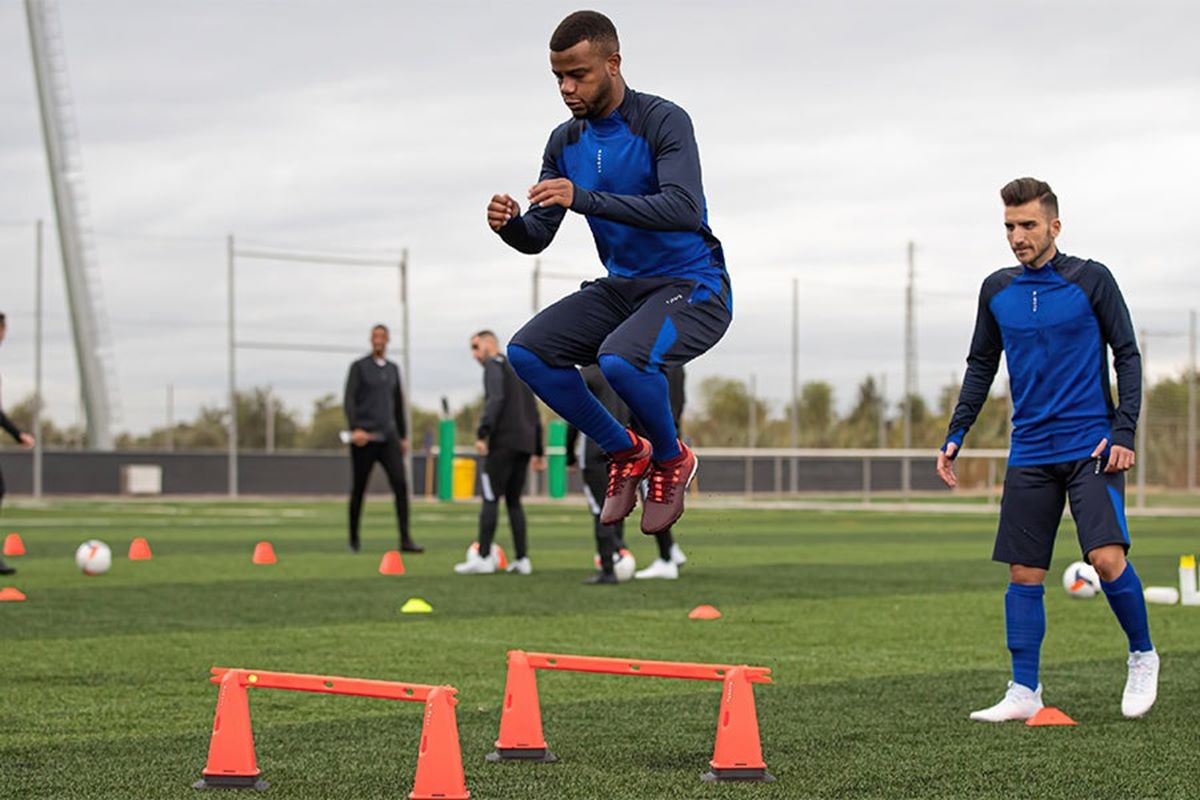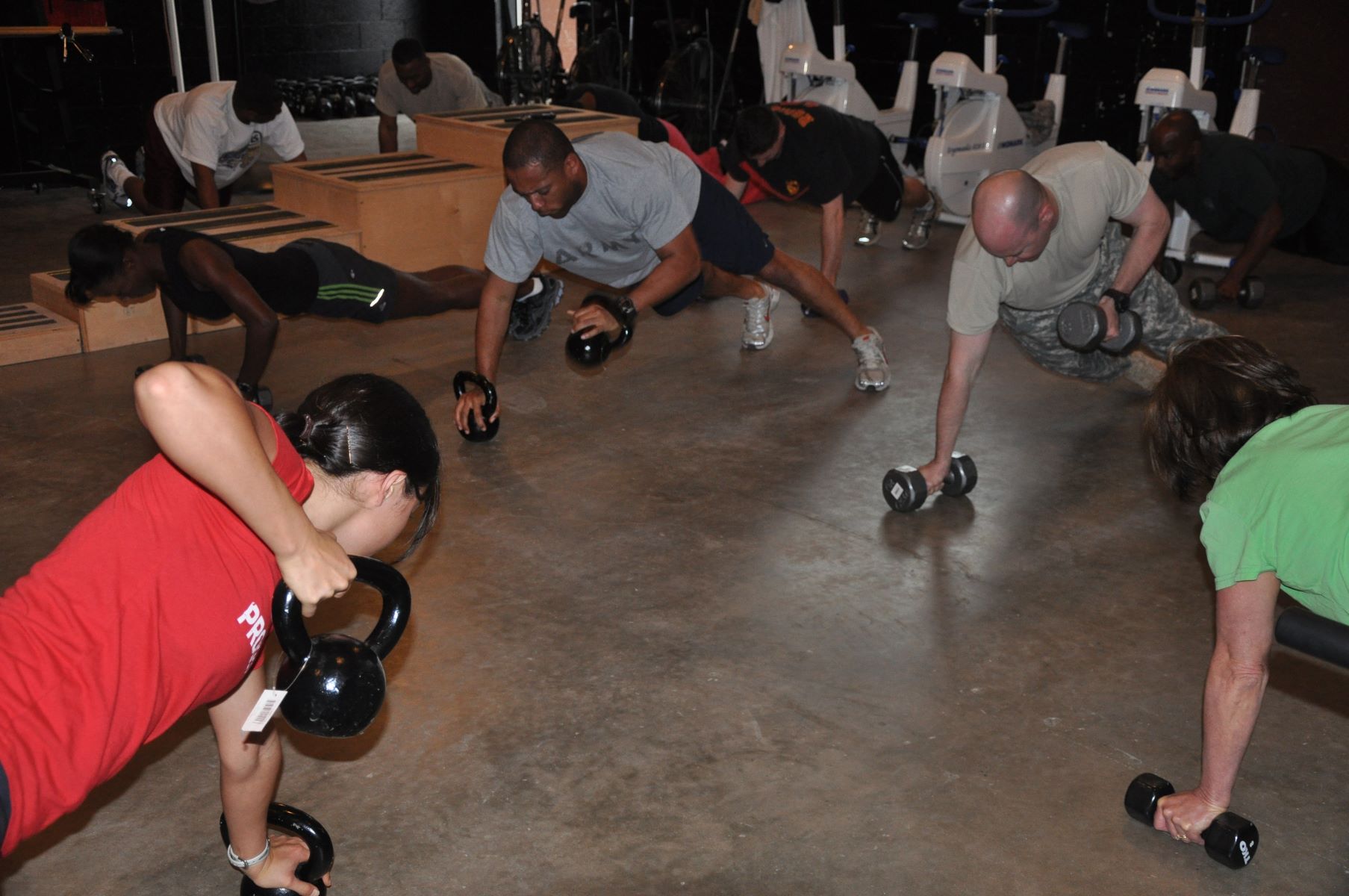

Featured
How Is Muscular Endurance Assessed?
Modified: January 2, 2024
Discover how muscular endurance is assessed and improve your fitness with our featured guide. Learn the best exercises and testing methods in just a few steps.
Introduction
Muscular endurance is a crucial component of overall physical fitness and plays a significant role in various activities and sports. It refers to the ability of a muscle group to exert force repeatedly over an extended period of time. Improving muscular endurance not only enhances performance but also helps prevent injuries and promotes overall health and well-being.
Assessing muscular endurance is essential to determine an individual’s baseline and track progress over time. It involves a series of tests and measurements that evaluate the muscles’ ability to sustain repeated contractions or maintain force for an extended duration. These assessments provide valuable insights into an individual’s current level of muscular endurance and help tailor training programs to improve this specific aspect of fitness.
In this article, we will explore various methods for assessing muscular endurance, ranging from repetition maximum (RM) tests that determine the maximum number of repetitions performed with a specific weight, to timed exercises that measure how long an individual can sustain a specific movement. Additionally, isometric hold tests, dynamic loading tests, and field tests will be discussed as other effective ways to evaluate muscular endurance.
Understanding the different assessment methods will enable individuals, fitness trainers, and athletes to choose the most suitable tests based on their specific goals and requirements. By incorporating these assessments into training regimens, individuals can monitor progress, identify weaknesses, and tailor workouts to improve muscular endurance.
Muscular Endurance: Definition and Importance
Muscular endurance refers to the ability of a muscle or muscle group to exert force repeatedly over an extended period of time. It is a crucial component of overall physical fitness, as it directly impacts performance in various activities and sports.
Unlike muscular strength, which focuses on exerting maximum force in a single effort, muscular endurance is about sustaining repeated contractions or maintaining force for a prolonged duration. It involves the muscles’ capacity to resist fatigue and continue performing tasks or exercises without compromising form or intensity.
The importance of muscular endurance extends beyond athletic performance. In everyday life, it enables us to engage in activities that require repeated muscular effort, such as carrying groceries, climbing stairs, or performing household chores. Better muscular endurance results in enhanced efficiency and reduced fatigue during these tasks.
In sports, muscular endurance plays a vital role in activities that involve repetitive movements or sustained effort. It allows athletes to perform at a high level throughout a prolonged game or match without experiencing fatigue-induced performance decline. Sports that heavily rely on muscular endurance include distance running, cycling, swimming, soccer, basketball, and tennis, to name a few.
Moreover, muscular endurance is essential for injury prevention. When muscles become fatigued, form and technique tend to deteriorate, increasing the risk of injuries. Proper muscular endurance training helps maintain muscular integrity and stability, reducing the likelihood of strains, sprains, and other common injuries.
Improving muscular endurance has a range of benefits for overall health and well-being. Regular endurance-focused workouts can enhance cardiovascular health, as the heart and lungs work harder to supply oxygen-rich blood to the muscles during prolonged activity. Additionally, muscular endurance training can lead to improved body composition by promoting fat loss and lean muscle gain.
Overall, understanding the definition and importance of muscular endurance can serve as a motivation to incorporate targeted training into fitness routines. By improving muscular endurance, individuals can enhance their performance in sports and everyday activities, reduce the risk of injuries, and achieve optimal physical health and well-being.
Methods for Assessing Muscular Endurance
There are several methods available for assessing muscular endurance. Each method is designed to evaluate the muscles’ ability to sustain repeated contractions or maintain force over an extended period of time. The choice of assessment method depends on the specific goals, equipment availability, and individual’s fitness level. Let’s explore some popular methods for assessing muscular endurance:
- Repetition Maximum (RM) Test: This method involves determining the maximum number of repetitions an individual can perform with a specific weight. For example, in a bench press RM test, the participant would gradually increase the weight until they reach a point where they can only perform a single repetition with proper form. This test provides a quantitative measure of an individual’s muscular endurance and helps determine appropriate training loads for specific exercises.
- Timed Exercises: In this method, individuals are required to perform an exercise for a set amount of time, aiming to sustain the movement as long as possible. Common examples include plank holds, wall sits, or push-up holds. The objective is to monitor how long the individual can maintain proper form and muscle activation, providing insight into their muscular endurance capacity.
- Isometric Hold Tests: Isometric exercises involve static contractions, where the muscle length and joint angle remain constant. Isometric hold tests assess the time an individual can hold a specific position or contraction, such as a static bicep curl or a wall sit. These tests focus on the ability to maintain tension in the muscles without any visible movement.
- Dynamic Loading Tests: This method involves performing a specific exercise with a predetermined load or resistance, aiming to complete as many repetitions as possible within a given time frame. Examples include the push-up test or squat endurance test. These tests measure an individual’s ability to sustain muscular effort throughout a dynamic movement.
- Field Tests: Field tests are practical assessments that simulate real-life activities or sports movements. They evaluate an individual’s ability to perform specific exercises or tasks related to their sport or daily activities. For example, in soccer, a field test may involve dribbling and shooting the ball continuously for a set period. These tests provide a more sport-specific assessment of muscular endurance.
Choosing the appropriate assessment method depends on various factors, such as the specific muscles being targeted, the equipment available, and the specific goals of the individual or trainer. Incorporating a variety of assessment methods can provide a comprehensive evaluation of an individual’s muscular endurance and help design customized training programs to improve this facet of fitness.
Repetition Maximum (RM) Test
The Repetition Maximum (RM) test is a common and effective method for assessing muscular endurance. It measures the maximum number of repetitions an individual can perform with a specific weight before reaching fatigue or muscle failure. This test provides valuable information about an individual’s muscular endurance capacity and helps determine appropriate training loads for specific exercises.
In an RM test, the individual gradually increases the weight until they reach a point where they can only perform a single repetition with proper form. For example, in the bench press RM test, the participant would start with a relatively light weight and perform as many repetitions as possible until they can no longer maintain proper form. The weight at which the participant reaches muscle failure is considered their 1RM, representing their maximum muscular endurance for that particular exercise.
The RM test can be performed for various exercises, such as squats, bicep curls, or shoulder presses. It is typically conducted using free weights, weight machines, or resistance bands, depending on the equipment available.
By determining an individual’s 1RM, trainers and athletes can establish baseline data and design training programs tailored to their specific goals. For example, if the objective is to improve muscular endurance, the training program may involve performing exercises at a lower percentage of the 1RM with higher repetitions. On the other hand, individuals aiming to increase muscular strength may train at a higher percentage of their 1RM with fewer repetitions.
It is important to note that the RM test should be conducted with caution, ensuring proper form and safety measures are followed. It is advisable to have a spotter or trainer present to provide assistance and ensure the participant’s safety during the test. Using appropriate equipment, such as weight belts or lifting straps, can also help maintain safety and proper technique.
Overall, the RM test is a valuable method for assessing muscular endurance, providing information on an individual’s maximum capacity for specific exercises. By incorporating this test into training programs, individuals can monitor progress, adjust training loads, and improve their muscular endurance over time.
Timed Exercises
Timed exercises are another effective method for assessing muscular endurance. Instead of focusing on the maximum number of repetitions, timed exercises measure how long an individual can sustain a specific movement or exercise. This method provides valuable insights into an individual’s ability to maintain muscle activation and proper form over an extended period of time.
Common examples of timed exercises include plank holds, wall sits, or push-up holds. In a plank hold, for instance, the individual assumes a push-up position and maintains a straight line from head to toe, supporting their bodyweight on their forearms and toes. The goal is to hold this position for as long as possible without compromising form or muscle activation.
During timed exercises, it is essential to maintain proper technique and form throughout the entire duration. Deviations from the correct position or loss of muscle engagement can affect the effectiveness of the assessment and may lead to inaccurate results. Trainers or spotters can provide guidance and cues to ensure proper form is maintained.
Timed exercises can be modified to target different muscle groups and incorporate a variety of movements. For example, a timed squat hold can assess lower body endurance, while a timed side plank can evaluate core stability and lateral strength.
By tracking the time an individual can hold a specific exercise, trainers and athletes can observe progress and identify areas for improvement. Over time, the goal is to increase the duration of the timed exercise, indicating improved muscular endurance.
It is important to note that timed exercises should be challenging yet reasonable for the individual’s fitness level. Setting realistic goals and gradually increasing the duration of the exercise can help avoid injuries and excessive fatigue. Additionally, incorporating rest intervals between sets can allow for adequate recovery and optimize performance during the assessment.
Overall, timed exercises provide a practical and straightforward method for assessing muscular endurance. They offer a real-time measurement of an individual’s ability to sustain muscle activation and proper form over an extended duration. By incorporating timed exercises into training programs, individuals can gauge their progress, set goals, and improve their muscular endurance over time.
Isometric Hold Tests
Isometric hold tests are a popular method for assessing muscular endurance. Unlike other assessment methods that involve dynamic movements, isometric hold tests focus on static contractions where the muscle length and joint angle remain constant. These tests evaluate an individual’s ability to maintain tension in the muscles without any visible movement, providing valuable information about their endurance capacity.
During an isometric hold test, the individual is required to hold a specific position or contraction for as long as possible. Common examples include a static bicep curl or a wall sit. In a static bicep curl, the individual holds a dumbbell in a flexed arm position without any movement, engaging the biceps and maintaining tension in the muscles for a set duration.
Isometric hold tests can be performed for various muscle groups and target specific areas of the body. These tests are often used for upper body muscles, such as the shoulders, arms, and core muscles. However, they can also be adapted for lower body muscles, such as the glutes and quadriceps.
The duration of the isometric hold can vary depending on the test’s objective and the individual’s fitness level. Trainers may use predetermined time goals or encourage participants to hold the position until muscle failure, when they are no longer able to maintain the contraction with proper form.
Proper form and technique are essential during isometric hold tests. Maintaining the correct position and engaging the targeted muscles without compensating with other muscle groups ensures accurate results and prevents injury. Trainers or spotters can provide cues and guidance to ensure proper form throughout the test.
Isometric hold tests offer several benefits. They require minimal equipment, making them accessible to a wide range of individuals. Additionally, they provide a specific focus on muscular endurance, allowing trainers and athletes to tailor training programs based on the individual’s results. By incorporating isometric hold tests into their routines, individuals can track progress, identify weaknesses, and develop strategies to improve their muscular endurance.
It is important to note that isometric hold tests should be practiced safely and gradually. Participants should start with shorter hold times and gradually increase the duration to avoid excessive strain on the muscles. Additionally, listening to the body and avoiding any pain or discomfort during the test is essential to prevent injuries.
In summary, isometric hold tests provide a unique way to assess muscular endurance by evaluating an individual’s ability to sustain tension in the muscles without any visible movement. These tests can be adapted for various muscle groups and offer valuable insights into an individual’s capacity to maintain a static contraction. By incorporating isometric hold tests into training programs, individuals can monitor progress, identify weaknesses, and improve their muscular endurance over time.
Dynamic Loading Tests
Dynamic loading tests are an effective method for assessing muscular endurance, focusing on an individual’s ability to sustain effort and perform continuous repetitions of a specific exercise. These tests involve dynamic movements that require the muscles to generate force repeatedly over an extended period.
One example of a dynamic loading test is the push-up endurance test. In this test, the individual performs as many consecutive push-ups as possible without resting or compromising form. The aim is to assess the muscular endurance of the upper body, primarily the chest, shoulders, and triceps.
Other dynamic loading tests may include exercises like squats, lunges, or sit-ups, depending on the specific muscle groups being targeted. The key is to select a movement that engages the muscles of interest and allows for continuous repetitions without significant fatigue-induced performance decline.
Dynamic loading tests can be adjusted for individuals of different fitness levels. Advanced individuals may perform the test with bodyweight or additional resistance, while beginners may focus on performing the movement with proper form and technique. Trainers or spotters can provide guidance and ensure that participants maintain proper form throughout the assessment.
It is important to note that proper warm-up and preparation are essential before performing dynamic loading tests. Warming up the muscles and joints helps prevent injuries and optimizes performance during the test. Additionally, incorporating rest intervals between sets or exercises can allow for brief recovery and maintain the quality of movements.
Dynamic loading tests offer a practical assessment method, simulating movements that individuals may encounter in sports or everyday activities. By measuring the number of repetitions performed or the duration of the test, trainers and athletes can track progress and set target goals for improvement.
These tests also provide valuable feedback on an individual’s muscular endurance capacity during dynamic movements. By identifying weaknesses or limitations, trainers can design targeted training programs to enhance muscular endurance specific to dynamic activities.
Individuals can incorporate dynamic loading tests into their training routines to gauge progress and monitor improvements in muscular endurance over time. By progressively increasing the number of repetitions or duration of the test, athletes and fitness enthusiasts can challenge themselves and continue to develop their muscular endurance capabilities.
In summary, dynamic loading tests are effective assessments for evaluating an individual’s ability to sustain effort and perform continuous repetitions of a specific exercise. They provide insights into an individual’s muscular endurance during dynamic movements and help identify areas for improvement. By incorporating these tests into training programs, individuals can track progress and tailor workouts to enhance their muscular endurance in dynamic activities.
Field Tests
Field tests are practical and sport-specific methods for assessing muscular endurance. These tests simulate real-life activities or sports movements, providing a more meaningful assessment of an individual’s muscular endurance in specific contexts.
Field tests often involve performing exercises or tasks related to a particular sport or activity. For example, in soccer, a field test may involve dribbling and shooting the ball continuously for a set period. In basketball, a field test may require executing a series of lay-ups within a specific time frame. These tests mimic the demands of the sport and assess an individual’s ability to sustain muscular effort throughout the performance of specific movements.
The advantage of field tests is that they provide a more sport-specific assessment of muscular endurance, taking into account the various dynamic movements and energy requirements of the activity. They also add an element of skill and coordination to the assessment, which may be important in certain sports.
Field tests can be adapted to match different fitness levels and sports requirements. Trainers and coaches can modify the duration, intensity, or complexity of the tasks to suit the individual’s ability and the goals of the assessment. By adjusting these variables, field tests can provide both a challenge and an achievable goal for individuals of different fitness levels.
Performing field tests in appropriate settings, such as on the field, court, or track, can enhance the relevance and authenticity of the assessment. This allows for a more accurate evaluation of an individual’s muscular endurance in a sport-specific context. Trainers and coaches can observe the individual’s technique, endurance, and overall performance during the field test to gain insights into their strengths and areas for improvement.
Field tests are valuable tools not only for assessing an individual’s current muscular endurance but also for monitoring progress over time. By regularly repeating the tests, trainers and athletes can track improvements, set goals, and design training programs that address specific weaknesses identified during the field tests. This enables individuals to develop their muscular endurance in a way that directly translates to improved performance in their chosen sport or activity.
It is important to note that field tests should be conducted safely and with proper warm-up exercises to minimize the risk of injuries. Participants should also be encouraged to give their best effort during the test, as performance in a field test can serve as a motivator for improvement.
In summary, field tests provide sport-specific and practical methods for assessing muscular endurance. By replicating the demands of real-life activities or sports movements, these tests offer a more meaningful evaluation of an individual’s endurance in specific contexts. Incorporating field tests into training programs allows for a targeted improvement of muscular endurance that directly translates to improved performance in sports or activities.
Conclusion
Assessing muscular endurance is crucial for individuals, trainers, and athletes to understand their current level of endurance and track progress over time. By employing various assessment methods, such as repetition maximum tests, timed exercises, isometric hold tests, dynamic loading tests, and field tests, individuals can gain valuable insights into their muscular endurance capacity and tailor their training programs accordingly.
Muscular endurance plays a significant role in everyday activities and sports, allowing individuals to sustain repeated muscle contractions and maintain effort over an extended duration. Improving muscular endurance leads to enhanced performance, reduced risk of injuries, and improved overall health and well-being.
The repetition maximum (RM) test determines an individual’s maximum number of repetitions they can perform with a specific weight, providing a quantitative measure of their muscular endurance. Timed exercises assess how long an individual can sustain a specific movement, while isometric hold tests focus on the ability to maintain tension in specific muscles without any visible movement. Dynamic loading tests require performing continuous repetitions of an exercise, and field tests provide sport-specific assessments of muscular endurance.
It is important to approach each assessment method with proper form, technique, and safety measures. Participants should gradually increase the intensity or duration of the exercises to avoid strain or injury. By tracking progress through regular assessments, individuals can set realistic goals for improvement and design targeted training programs to enhance their muscular endurance.
In conclusion, understanding the various methods for assessing muscular endurance empowers individuals to evaluate their current level of endurance, identify areas for improvement, and tailor their training programs accordingly. By focusing on improving muscular endurance, individuals can enhance their performance in sports and everyday activities, reduce the risk of injuries, and achieve optimal physical health and well-being.









